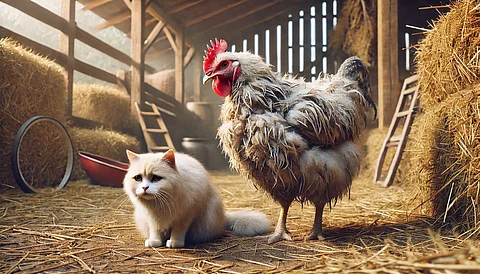The recent outbreak of avian influenza (H5N1) in India has raised significant concerns, particularly due to its historic spread to domestic cats in Chhindwara district, Madhya Pradesh. This marks the first documented instance of H5N1 infecting cats in the country.
The Health Ministry confirmed on February 28, 2025, that three pet cats and a live bird market in Chhindwara tested positive for H5N1 on January 31, 2025.The infected cats exhibited severe symptoms, including high fever, loss of appetite, and lethargy, before giving in to the illness within one to three days after sample collection.
While no human cases have been reported in India this year, the government is maintaining vigilance. Samples from 65 people who came into contact with the infected cats were tested, and all results were negative for influenza.
The spread of H5N1 has also affected the poultry industry in other parts of India. In Andhra Pradesh, around 500,000 chickens raised for egg production have died since January 13, 2025.
What exactly is H5N1?
H5N1 is a type of bird flu virus that primarily affects birds but can also infect mammals including humans. (1) It is highly contagious and can cause severe illness in birds, leading to rapid death. In humans, symptoms range from mild to severe and can be fatal.
The virus spreads through contact with infected birds or contaminated environments. While human cases are rare, H5N1 is a concern due to its potential to mutate and spread more widely among humans. (2)
How does H5N1 spread?
Among Birds:
H5N1 spreads among birds through their saliva, mucus, and feces. This can happen quickly in crowded poultry farms or live bird markets. (3)
Human Infection:
Humans can become infected through close contact with infected birds or contaminated environments. This might involve handling infected poultry, slaughtering or preparing infected birds, or visiting live poultry markets. (4)


